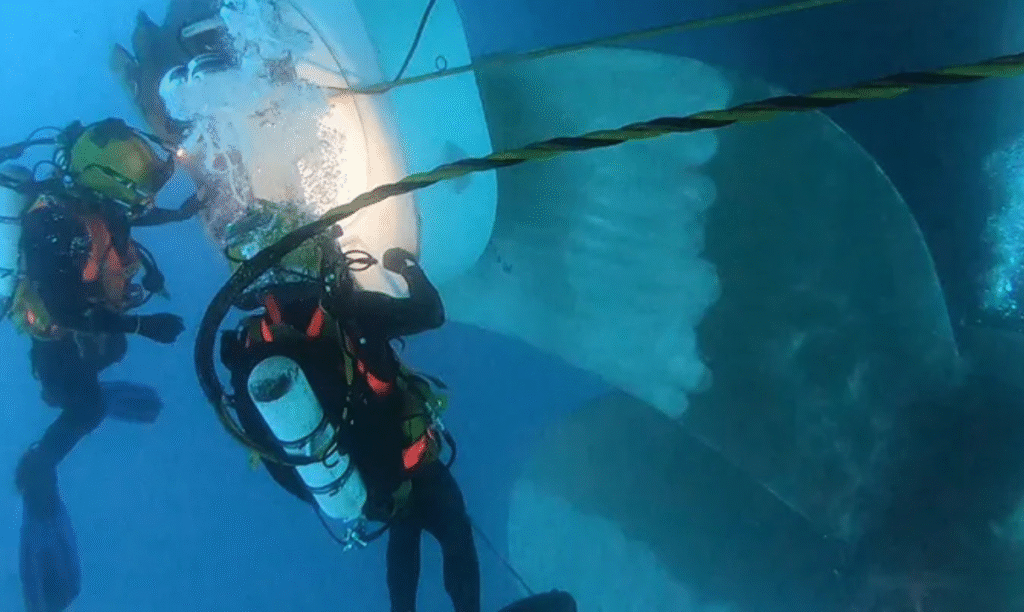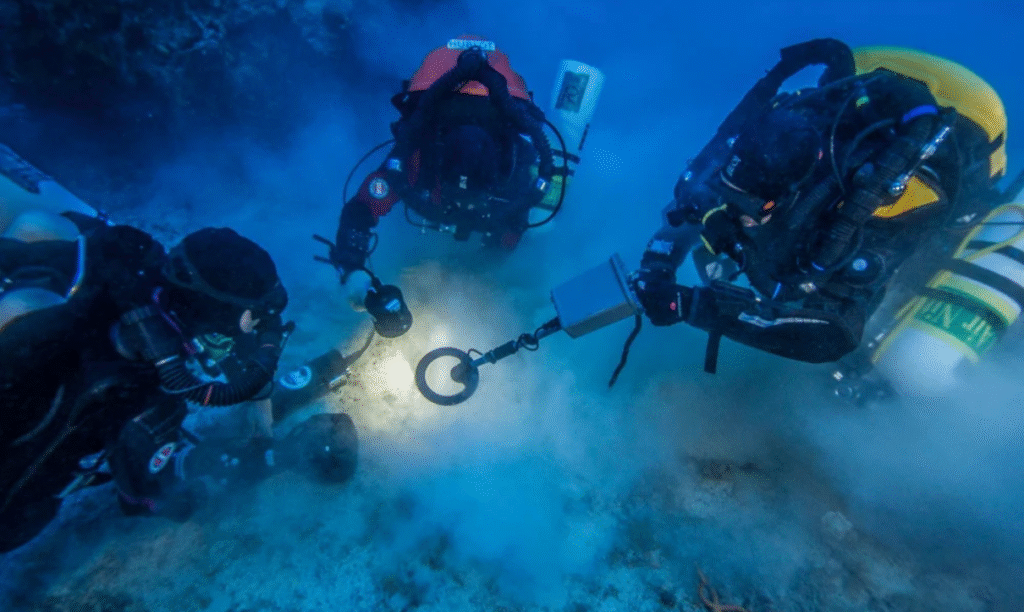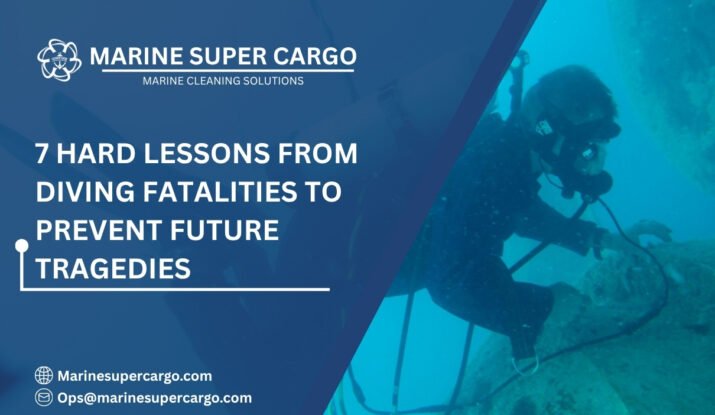Diving is one of the most awe-inspiring professions, but it can also be one of the most dangerous. Beneath the waves, divers face pressure beyond what most people can imagine—not just from the ocean itself, but from the weight of responsibility to keep ships operational, hulls clean, and ecosystems safe. Sadly, history has shown us that when equipment fails, training falters, or safety protocols are ignored, lives are lost.
This article explores lessons from diving fatalities—the cautionary tales that have reshaped how we approach underwater work. These lessons are not meant to evoke fear, but rather to anchor us in safer, smarter practices that protect lives, businesses, and the marine environment.
Why Learn Lessons from Diving Fatalities?
Every accident carries a story. Some stories are about human error, others about neglected maintenance, and still others about systemic failures. By studying these tragedies, we don’t just mourn—we prevent.
Lessons from diving fatalities serve three critical purposes:
- Preserving life – no ship operation is worth a diver’s life.
- Driving compliance – failures have led to stricter regulations from IMCA (imca-int.com) and IMO (imo.org).
- Improving efficiency – safer practices reduce delays, insurance disputes, and costly accidents.
Ignoring lessons from diving fatalities is like ignoring a lighthouse during a storm—it only leads to disaster.

Common Causes Highlighted by Diving Fatalities
Let’s dive deeper into the key lessons revealed by past incidents:
- Inadequate Training
Divers who lack competence in managing pressure, visibility challenges, or emergency drills are at higher risk. - Poor Equipment Maintenance
Damaged breathing apparatus, malfunctioning suits, or faulty communication gear have been fatal. - Weak Safety Supervision
Many cases reveal insufficient dive planning, monitoring, or communication between dive teams and topside supervisors. - Environmental Conditions
Sudden currents, poor visibility, or contaminated waters often contribute to accidents. - Overwork and Fatigue
Lessons from diving fatalities often tie back to human fatigue—divers stretched beyond safe limits.
Each failure creates a blueprint for what must improve industry-wide.
Regulatory Reforms Triggered by Fatalities
History shows that regulations follow tragedy. Many lessons from diving fatalities shaped mandatory frameworks like:
- IMCA Guidance Documents – defining everything from diver competence to emergency procedures.
- ADCI Consensus Standards – covering training and qualifications.
- IMO and MARPOL (Marine Insight – MARPOL Convention) – ensuring environmental safety is not compromised during underwater operations.
- Flag State Rules – requiring certified personnel and detailed reporting of diving activities.
Tragedies forced the industry to codify safety as law, not suggestion.
Lessons from Diving Fatalities for Ship Operators
So what do ship owners, operators, and managers need to take away? Here are the most important lessons from diving fatalities applied to real-world operations:
- Always hire certified divers, trained under IMCA or ADCI standards.
- Make hull maintenance proactive, reducing risky emergency dives.
- Invest in equipment inspections as regularly as you invest in fuel efficiency.
- Build “safety-first” cultures—the crew should never cut corners under pressure.
- Document everything. Records not only prove compliance but also guide safer practices.
These measures make lessons from diving fatalities the blueprint for prevention.
Case Studies: Fatalities That Reshaped Safety
- The Communication Breakdown
A diver lost contact due to faulty communication equipment, highlighting the critical need for dual systems. - Fatigue-Linked Disaster
A team working beyond regulated hours faced decompression sickness, leading to fatalities. Regulations on maximum dive hours increased afterward. - Improper Supervision
Lessons from diving fatalities show that lack of surface supervision often plays a critical role—trained supervisors are lifelines.
Each case reinforces that prevention rests in preparation, training, and monitoring.
Integrating Safety into Daily Routines
Safety cannot be an afterthought—it must be woven into the fabric of operations. To embed lessons from diving fatalities into practice:
- Conduct toolbox talks before every dive.
- Use checklists for equipment, divers, and emergency readiness.
- Encourage a no-blame culture—divers should feel safe reporting hazards.
- Conduct mock emergency drills quarterly.
Think of it as “weaving a safety net”—the tighter the weave, the less likely anyone is to fall through.
✅ 4 Things to Check for Safety at Sea pic.twitter.com/dAxhJQ2i6U
— Marine Super Cargo (@Marinsupercargo) September 14, 2025
Environmental and Compliance Aspects
Fatalities don’t just impact divers—they ripple into environmental and compliance risks. If a diver dies during illegal or poorly managed cleaning, owners may face:
- MARPOL violations
- Port State Control detention
- Insurance claim denials
This makes lessons from diving fatalities critical not just for safety but for financial and legal protection.
Best Practices Derived from Fatalities
From all these cases, the following enduring lessons have emerged:
- Never dive without a certified supervisor on-site.
- Train comprehensively—including fatigue awareness and stress management.
- Maintain double redundancy in surface-supplied systems.
- Audit contractors regularly for compliance with international standards.
- Link hull cleaning schedules with compliance and safety targets.
When safety and compliance converge, accidents become preventable.

The Future: Technology as a Safety Partner
The next frontier is integrating technology into preventing accidents while applying lessons from diving fatalities:
- ROVs and Drones – Replacing high-risk diver missions in dangerous waters.
- AI-Powered Monitoring – Detecting fouling early to minimize high-stress cleanings.
- Blockchain for Compliance – Transparent reporting of diver training and equipment maintenance.
- Wearable Safety Tech – Real-time biometric monitoring of divers underwater.
The future is about predicting and preventing, not just reacting.
Conclusion
Lessons from diving fatalities paint oceans with both tragedy and wisdom. They remind us that beneath every loss lies an opportunity to improve safety, compliance, and sustainability.
- Safety protocols and certification are non-negotiable.
- Equipment and supervision failures are entirely preventable with vigilance.
- Embedding lessons into culture preserves lives and builds resilient operations.
For expert compliance-driven hull cleaning safety support, explore CleanShip.co.
FAQs:
Q1. What are the key lessons from diving fatalities?
Primarily, they stress the need for training, reliable supervision, proper equipment maintenance, and adherence to international safety guidelines.
Q2. Why do diving fatalities still occur today?
Human error, fatigue, poor training, and neglected equipment remain the main causes despite regulatory progress.
Q3. How can ship operators prevent diving accidents?
By hiring certified contractors, enforcing safety drills, and conducting equipment audits in line with IMCA and ADCI standards.
Q4. Do diving fatalities have compliance impacts?
Yes, they can trigger MARPOL violations, port detentions, and rejected insurance claims if operations are unlawful or poorly documented.
Q5. Will future technology eliminate diving fatalities?
While risks may never reach zero, innovation in ROVs, AI, and real-time monitoring will drastically reduce human exposure to extreme hazards.


